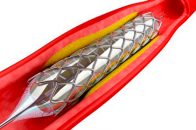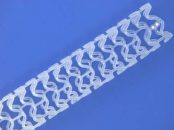There is a consistent number of patients presenting high risk of bleeding. In this context, receiving dual antiplatelet therapy (DAPT) for 12 months would not be advisable. Even though the European and American guidelines recommend 1 to 6 months for chronic and acute syndromes in this group, these are often complex PCI cases, which makes…
Results of Zotarolimus-Eluting Stents vs Biolimus-Eluting Polymer-Free Stents After 2 Years. Are They Safe in Patients at High Risk for Bleeding?
The proportion of patients treated with coronary angioplasty who are at a high risk for bleeding is increasing. In this population, extended dual antithrombotic therapy increases the risk of bleeding. The 1-year randomized Onyx one study has demonstrated the non-inferiority of zotarolimus-eluting stents (ZES) vs. biolimus-coated polymer-free stent BioFreedom (DCS). Patients received dual-antiplatelet therapy (DAPT)…
Watch again Paradigm Shift: Magnesium in Bioresorbable Technology – Webinar SOLACI
Watch again Paradigm Shift: Magnesium in Bioresorbable Technology. Bioresorbable Scaffolds Innovation Highlights on our Youtube channel. Watch it now! Paradigm Shift: Magnesium in Bioresorbable Technology. Bioresorbable Scaffolds Innovation Highlights
STEMI: Can We Omit Stenting?
The recommended treatment for ST elevation acute myocardial infarction (STEMI) is early PCI, typically stenting. However, stent implantation always involves the risk of intravascular complications, such as stent thrombosis or restenosis. Sometimes stable flow is restored to the target vessel after initial PCI and we can omit stenting when there is no angiographically significant residual…
Watch again our Webinar “SOLACI@BIOTRONIK” on our Youtube account.
Watch again our Webinar “SOLACI@BIOTRONIK“ on our Youtube account. The event was held on April 27th, 2021.
Two-Stent Strategy is Safer in True Bifurcation Lesions
Courtesy of Dr. Carlos Fava. DES have improved PCI outcomes, but one of its biggest challenges continues to be bifurcations (especially when we have to use two stents, since it’s been associated to higher restenosis and stent thrombosis rates). Left main coronary artery true bifurcation lesions are the ones that generate the greatest challenge and…
TAVR: Balloon-Expandable or Self-Expanding Valves, Which Is the Answer?
Courtesy of Dr. Carlos Fava. Transcatheter aortic valve replacement (TAVR) has shown benefit and is currently moving towards low-risk patients, as well as bicuspid aortic valves and (to a lower extent) aortic regurgitation. However, we must ponder on which valve should be used on each patient: balloon-expandable (BE) or self-expanding (SE) valve? They represent different technologies…
DES and DCB with Similar Results in Femoropopliteal Artery Disease
Courtesy of Dr. Carlos Fava. Nowadays, peripheral interventions are on the rise and the technological development of stents and balloons would help achieve better outcomes. Both drug-eluting stents (DES) and drug-coated balloons (DCB) have proved to be beneficial for femoropopliteal interventions, but the actual role of each of these technologies remains unclear. This prospective, randomized 1:1…
Common Femoral PCI Becomes a Valid Alternative
Gentileza del Dr. Carlos Fava. The common femoral artery has always been treated with surgery. Thanks to the development of new generation stents and the advancement of percutaneous intervention, common femoral lesions are currently being treated with PCI. However, data on the safety of PCI vs. surgery, remain unavailable. The TECCO is multicenter study, randomized…
SOLACI CACI 2017 | BVS: from clinical evidence to daily practice
Read articles on the main presentations of the first day of SOLACI-CACI 2017 Congress. See the presentation by Dr. Stephen Ellis entitled “BVS: from clinical evidence to daily practice”. We are interested in your opinion. Please, leave your comments, thoughts, questions, etc., below. They will be most welcome.









